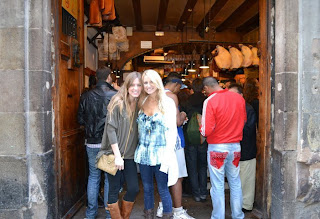In March, I was lucky enough to see one of the top DJs perform at
one of the leading clubs in Barcelona, Opium Mar. Located in Port Olympic right on the beach, Opium is a favorite among young adults. They simply know how to entertain.
On top of that, it is a good crowd--a combination of both tourists and locals. Although my ticket said Afrojack came on at midnight, I knew better. By this time, I had been out enough to know that the nightlife in Barcelona does not really reach its peak until around four or five in the morning. Although I had been to Opium prior to this event, I had not seen the club go off like this. When we finally arrived around 2 AM, Afrojack was coming on stage.
Formerly known as Nick van de Wall, Afrojack is a DJ from the Netherlands. Perhaps his best song "Take Over Control", featuring Dutch singer Eva Simons, charted in a number of countries, and tonight, it was his encore. My friends and I were lucky enough to score VIP after talking with some Swedish guys for awhile. Certainly, we had some of the best seats in the house. But I wanted to dance, and dance I did. As perhaps one of the best nights of my life, I know now that the nightlife in Barcelona surpasses even the Vegas strip. Its more than just entertainment--its the culture: the cava, the dancers, the sparkling costumes, and of course, the music.
AFROJACK @ OPIUM 2011:

























